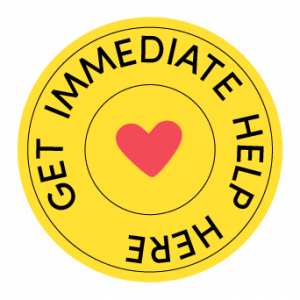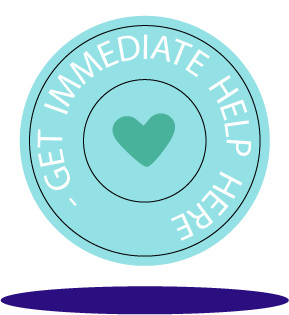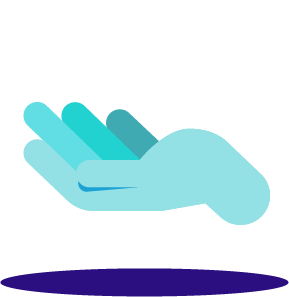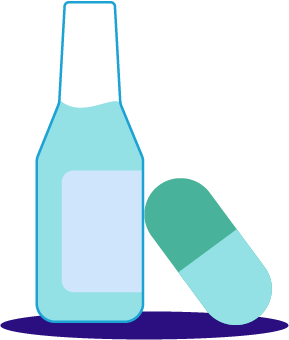About this Guide

This guide was made to help you navigate some of the life changes that come with heading off to college. Below is a crash course in how it’s laid out:
Help
Help is never more than a click away in this guide. See that bright yellow circle at the bottom of the screen? If you’re ever feeling trapped or you need someone to speak with right away, just click.
Homepage
Click here to get to the Guide’s homepage. Right now you’re in the About section.
Relationships and Self-Care
Check out Relationships and Self-Care for tips on how to adjust to your new living situation (even if it’s just living at home but in your new role as a college student), take care of yourself, and make and manage new relationships.
Mental Health, Identity, and Race
In Mental Health, Identity, and Race, you can explore information about understanding identity, bringing your full self to campus, and mental resources and tips specific to LGBTQ students and students of color.
Self-Advocacy, HIPAA, and FERPA
In the Self-Advocacy, HIPAA, and FERPA section, there are resources that outline your rights concerning mental health and self-advocacy. That may not sound super interesting, but don’t ever forget that, even as a student, you have rights. This guide will help you exercise them if you need to.
Taking Care of Your Mental Health
In Taking Care of Your Mental Health you can find information on coping with a current diagnosis in a new environment, finding and speaking with health-care providers, and learning about peer groups and other support.
Staying Safe
Go to Staying Safe for resources on navigating any difficult situations you may face. You’ll find good info about recreational substance use and misuse, what toxicity looks like in relationships, and how to help yourself or your friends avoid or manage dangerous or risky situations.
Mental Health Statistics
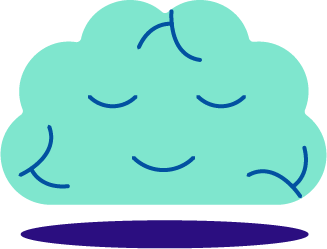
“Mental health” is a phrase that can sometimes come with stigma, but mental health is health—and it’s with us every day. The World Health Organization defines mental health as “the ability to think, learn, and understand one’s emotions and the reactions of others. Mental health is a state of balance.”
Sometimes we may struggle in small ways but return to that balance. Other times we may have bigger issues and need some help managing them. Everyone you meet at school—students, deans, professors, RAs, TAs—has struggled in little or big ways!
Whether you’re familiar with managing a mental health diagnosis or entirely new to the world of mental health, you’re not alone just because you’re at school. People from literally every background are thriving with diagnoses that, in some cases, carry a lot of cultural stigma. The National Alliance on Mental Illness (NAMI) has put together a brief infographic that shows how people with backgrounds similar to yours are addressing and managing their mental health in order to reach their full potential.
Racial discrimination also has an effect on mental health, but unfortunately it isn’t acknowledged broadly. Learn more about how discrimination can affect the mental health of BIPOC students.
You can read more about coping with discrimination and bias in Mental Health, Identity, and Race.
About the Authors

This guide was designed by young people with the help of the National Alliance on Mental Illness (NAMI) and The Jed Foundation (JED).
NAMI
NAMI is the nation’s largest grassroots mental health organization dedicated to building better lives for the millions of Americans affected by mental illness. The full story can be found at nami.org and by watching this video.
JED
The Jed Foundation (JED) is a nonprofit that protects emotional health and prevents suicide for our nation’s teens and young adults, giving them the skills and support they need to thrive today—and tomorrow. Learn more and get support at jedfoundation.org. If you are struggling with a mental health or emotional challenge, you can find information, resources, and tips in JED’s Mental Health Resource Center.
Get Involved With NAMI & JED

Starting or joining a NAMI on Campus Club or encouraging your school’s administration to bring JED Campus to your school are great ways to change the conversation around mental health and help your school do everything it can to protect student mental health and prevent substance misuse and suicide.
Finding or beginning a NAMI club at your school is a step you can take to raise awareness, bring experts to your campus, or generally educate your college’s students, staff, and professors about mental health at your school. A NAMI club isn’t the only way to address mental health and the stigmas around mental health conditions while you’re at school. A simple first step is to take NAMI’s Stigma Free pledge.
JED partners with colleges and universities to promote mental health and lower substance misuse and suicide risk. Through our two programs, JED Campus and JED Campus Fundamentals, we assess what is already working on campus to support student mental health, find out what the student body’s mental health needs are, and work with your school to create a customized strategic plan to holistically support student mental health and well-being. There are over 400 JED Campuses around the country.
